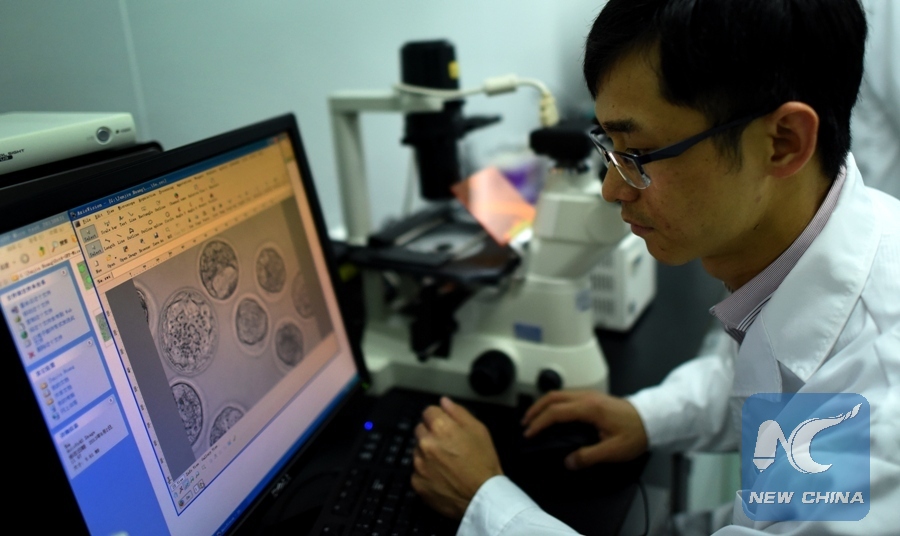
Associate Prefessor Huang Junjiu, also a gene-function researcher, makes experiments at Sun Yat-sen University in Guangzhou, capital of south China's Guangdong Province, April 2, 2016. In April of 2015, biologist Huang Junjiu published the first report of a human embryo with edited genes, sparking a global debate on the ethics of such research. In his study, Huang and his team used spare embryos from fertility clinics that could not progress to a live birth, and modified the gene, responsible for a kind of blood disorder, in the embryos. To accomplish the task, they adopted a powerful technique known as CRISPR-Cas9, which can be programmed to precisely alter DNA at specific sequences. (Xinhua/File Photo)
WASHINGTON, Oct. 12 (Xinhua) -- Scientists said Wednesday they have used a popular gene-editing tool to successfully fix a genetic mutation that causes sickle cell anemia, taking a key step toward a cure for the blood disease.
As described in the U.S. journal Science Translational Medicine, the researchers used CRISPR-Cas9 to correct the disease-causing mutation in stem cells from the blood of affected patients.
Only "a proportion" of stem cells were fixed and produced healthy hemoglobin, but that is "high enough to produce a substantial benefit in sickle cell patients," they said.
When implanted into mice, these corrected stem cells stuck around for at least four months, with no signs of side effects, a hint that they would also work in humans.
"This is an important advance because for the first time we show a level of correction in stem cells that should be sufficient for a clinical benefit in persons with sickle cell anemia," said co-author Mark Walters, director of Benioff Oakland's Blood and Marrow Transplantation Program at the University of California (UC), San Francisco.
Senior author Jacob Corn, scientific director of the Innovative Genomics Initiative at UC Berkeley, said they hope to re-infuse patients with the edited stem cells and alleviate symptoms of the disease.
Corn and Walters will work together to initiate an early-phase clinical trial to test this new treatment within the next five years.
"There is still a lot of work to be done before this approach might be used in the clinic, but we're hopeful that it will pave the way for new kinds of treatment for patients with sickle cell disease," Corn said.
Sickle cell anemia is a blood disorder caused by a single mutation in both copies of a gene coding for beta-globin, a protein that forms part of the oxygen-carrying molecule hemoglobin.
This homozygous defect causes hemoglobin molecules to stick together, deforming red blood cells into a characteristic "sickle" shape. These misshapen cells get stuck in blood vessels, causing blockages, anemia, pain, organ failure and early death.
The disease is particularly prevalent in African Americans and the sub-Saharan African population, affecting hundreds of thousands of people worldwide.
The researchers also noted that the approach might also able used to develop treatments for other blood diseases, severe combined immunodeficiency, chronic granulomatous disease, rare disorders like Wiskott-Aldrich syndrome and Fanconi anemia, and even HIV infection.
"Sickle cell disease is just one of many blood disorders caused by a single mutation in the genome," Corn said. "It's very possible that other researchers and clinicians could use this type of gene editing to explore ways to cure a large number of diseases."










